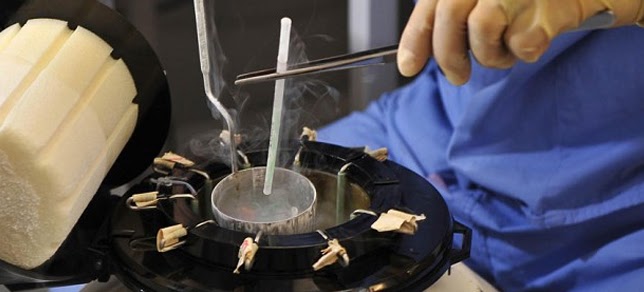Frozen Embryo Transfer
Implantation of a frozen embryo. This procedure is done when a patient opts for PGT testing before the transfer of embryos, or following a previous IVF cycle either after freezing of all embryos (no fresh transfer) or with a surplus of embryos after a failed fresh embryo transfer.
In women with excess good quality embryos that will not be transferred, these embryos are frozen for use later e.g. if no pregnancy takes place in the fresh cycle or for women seeking a second baby after a successful IVF
Embryos are frozen using vitrification. Vitrification or rapid freezing is associated with better survival for embryos at thawing. Embryos can be stored for years.
The Benefits Of Freezing Embryos
- Extending the potential success of fresh IVF cycles to subsequent attempts, avoiding the need to repeat ovarian stimulation and egg retrieval.
- Allowing the transfer of fewer embryos and single embryo transfer.
- Allowing time for additional procedures as embryo testing with preimplantation genetic diagnosis (PGD).
- Delaying the transfer to a later time if the lining of the uterus is not favorable in the fresh cycle: thin or unfavorable pattern.
- In some women with recurrent implantation failure.
- Recurrent pregnancy loss. Chromosomal testing for embryos; biopsy of one or few cells from each embryo and subsequently testing them for chromosomal number and some structural abnormalities. This could be helpful if a parent carrying structural chromosomal abnormalities that is causing recurrent miscarriage (e.g translocations; part of one chromosome is attached to another chromosome).
- Chromosomal testing of embryos and IVF outcomes; not all human embryos produced are normal. The human cell has 46 chromosomes. Significant proportions of embryos produced after natural or assisted conception carry chromosomal abnormality (mostly abnormal number of chromosomes). It is possible to test all chromosomes in an embryo aiming at selecting the normal embryos for transfer into the womb.

When ready to use the embryos the cavity of the uterus is checked using saline sonography (a simple office procedure) or hysteroscopy and any abnormal findings corrected. The lining of the uterus has to be prepared before transfer. There are two methods to prepare the lining of the uterus during frozen thaw cycles:
- Programmed cycle:a medicine is given to stop internal egg development and estrogen production, then external estrogen is administered till the thickness and the pattern of the lining of the uterus is favorable. This approach allows more flexibility in the timing of thaw and transfer or
- Embryo biopsy (Day 3 embryo)
- Natural cycle:without the administration of external medication, we monitor follicle development in the ovary to the point of ovulation through blood work and ultrasound. Embryos are thawed and transferred into the uterus 3 to 6 days later; depending on the stage they were thawed. We prefer this approach in ovulating women.
- Embryos has to be thawed in the correct time so that the age of the embryo in days matches the degree of development of the lining of the uterus. The survival of embryos after thaw is over 90% especially if rapid freezing (vitrification) is used.
- The pregnancy rates after frozen embryo transfer is close and sometimes higher than to those using fresh embryos. Children born after frozen embryo transfer are healthy do not show increased risk for any disease.
Outcome Of Frozen-Thawed Embryo Transfer
The survival of frozen embryos exceeds 95%. When transferred to the uterus they yield pregnancy rates close to those of fresh embryos especially if a good quality embryo was frozen in the fresh cycle. Long term follow up of children born after transfer of thawed embryos does not exhibit any increase in birth defects.
